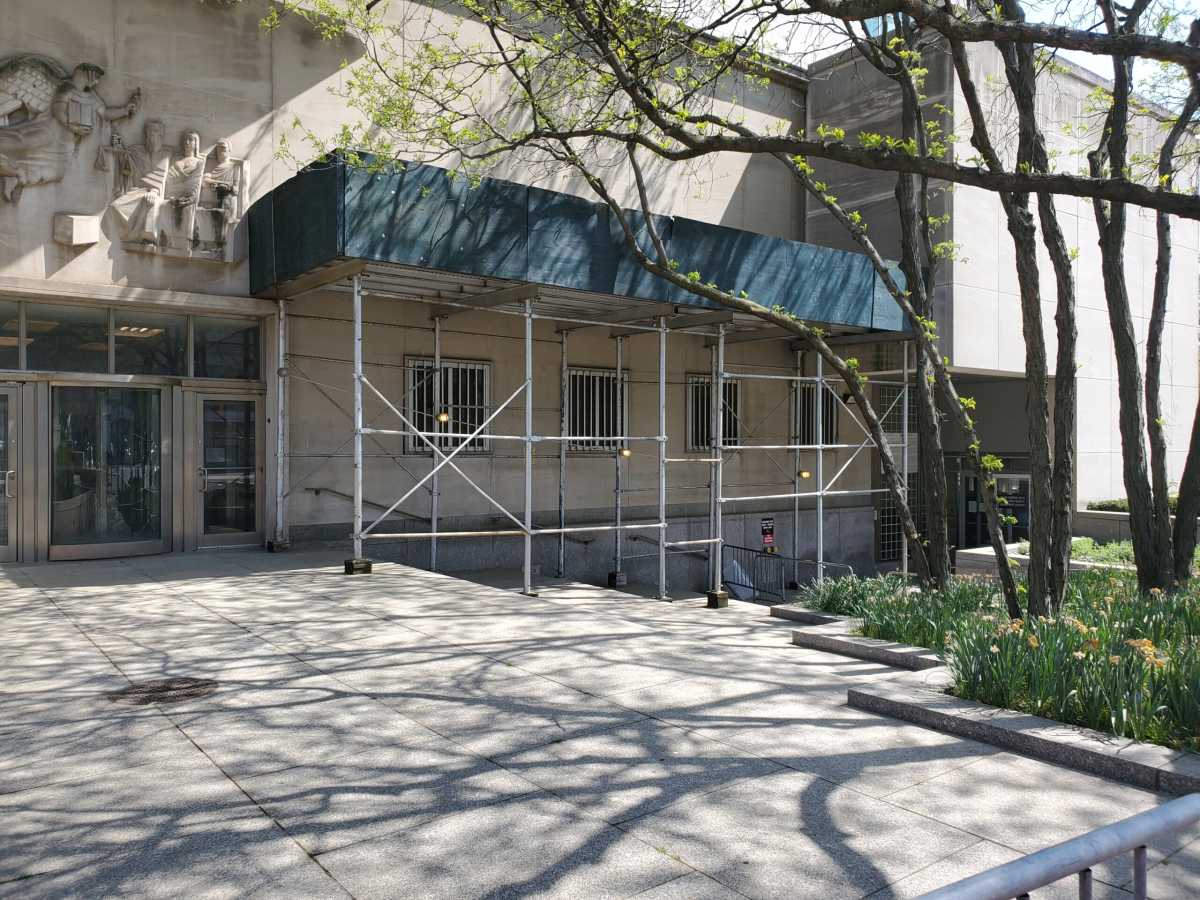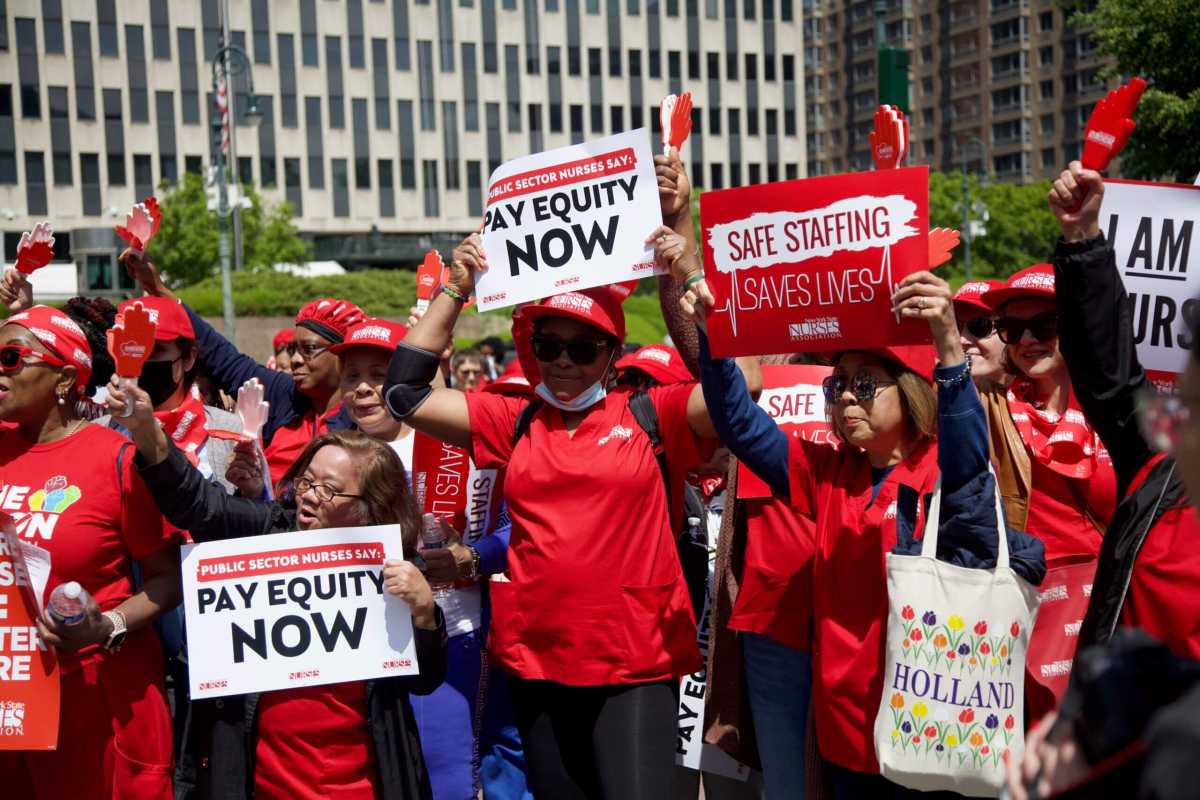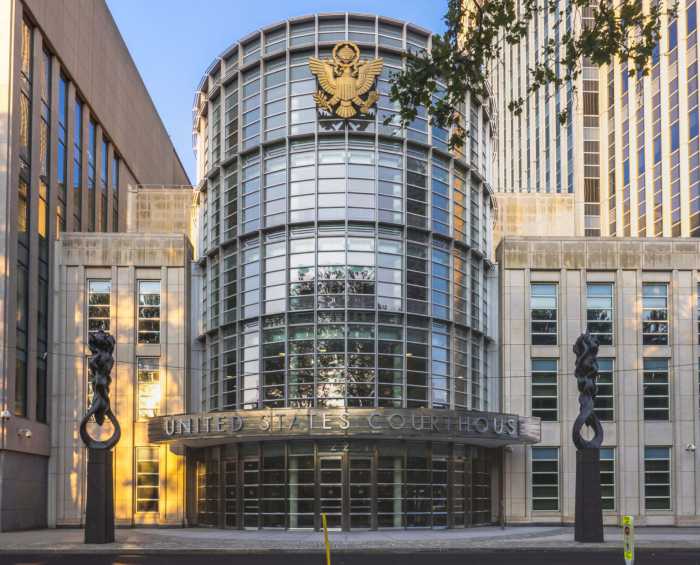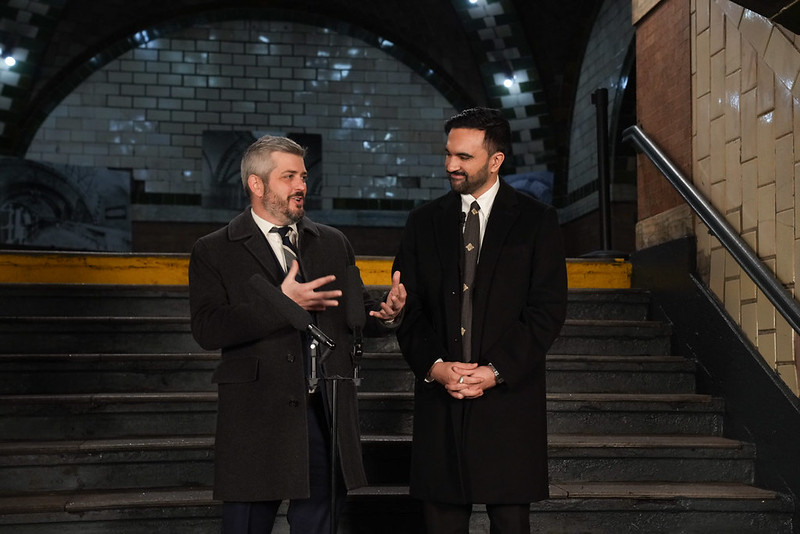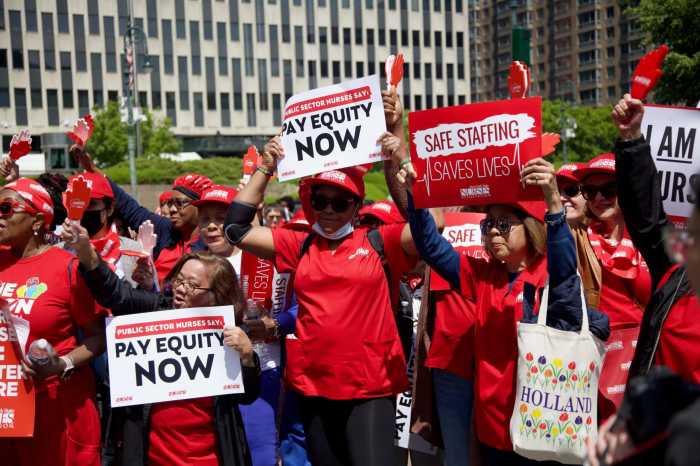In the Queens court system, the people are represented by judges and lawyers — and, apparently, scaffolding.
These temporary steel and wooden structures, typically used to protect people from fallen debris during exterior construction work, have become a common feature wrapped around the exterior of courthouses in Queens for nearly five years and counting.
The scaffolds are present at sites like the Queens County Criminal Court at 125-01 Queens Blvd. and the Supreme Court of Queens County at 88-11 Sutphin Blvd.
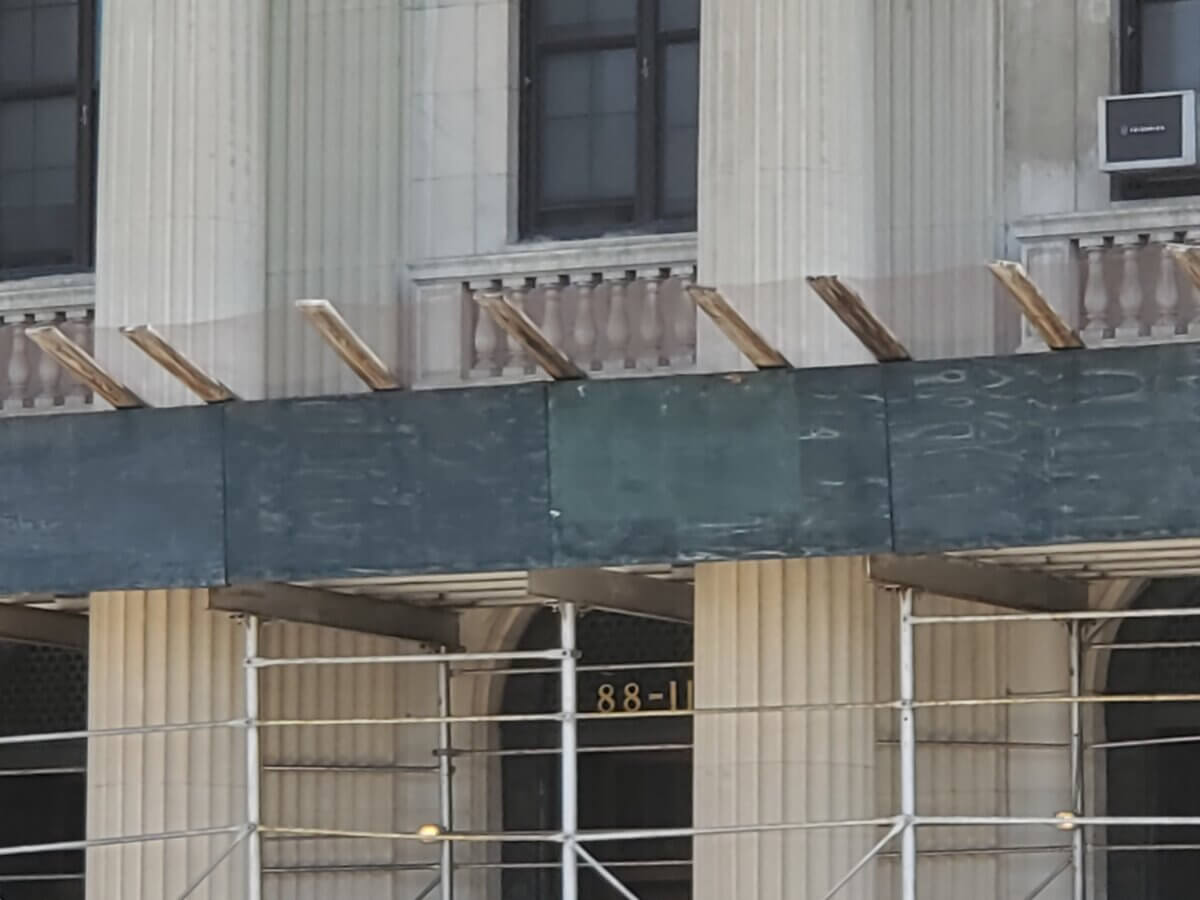
The sidewalk sheds at the buildings don’t appear to be going away anytime soon. According to a representative from the New York State Administrative Court Services, the sheds have been set up in order to accommodate facade issues in both buildings.
Due to the fact that the projects are both tied to capital work, it is unknown if and when the scaffolding will finally be removed.
According to the NYC Department of Buildings‘ website, the most recent work permit provided for the Supreme Court of Queens County was issued on Nov. 10, 2022. It was a renewal of a previous permit for the construction of the sidewalk sheds. The permit is issued to AAA Windows and Doors Corp. QNS reached out for comment and is waiting for a response.
The website also states that a renewal for a work permit at the Queens County Criminal Court was last provided on Aug. 23, 2016. The business for which this work permit was assigned is Atlantic Hoisting and Scaffold. The permit was granted for the installation of a heavy-duty sidewalk shed at the building.
According to a representative for the Department of Citywide Administrative Services, both projects originally began in 2009. While no work timeline has been established yet for these sites, design work may soon begin at one of the locations. There is also some optimism that work may soon begin on one of the locations, although it has not yet come to fruition.
“The sheddings are up because of hazardous conditions of the facade,” the representative said. “They won’t be removed until we are able to address those [hazardous conditions].”
There is no limit required by the city for how long a sidewalk shed can stay in place. Until more capital is devoted to improving the facades of these buildings, it doesn’t appear as though the scaffolding will be going away anytime soon.
Other courts with scaffolds
The scaffolding issue hasn’t been limited to Queens. For a long time, the Brooklyn Supreme Court house and the Bronx Courthouse have endured scaffolding around it.
The scaffolding around the Brooklyn Supreme Courthouse at 360 Adams St. has been there for 16 years. Since the 2022 fiscal year, a private contractor who owns the scaffolding has been getting paid $5,635 each month ($67,620 over a calendar year) by the city to maintain it.
This courthouse has received multiple violations related to the condition of the facade from agency inspectors for the Department of Buildings. These violations occurred in 2008, 2012, 2018 and 2022. Since none of these violations have been resolved, the scaffolding is required to stay up and shield passersby of any potential falling debris.
The Department of Design and Construction is currently working with its design partner to investigate the facade. There are plans to begin construction in 2025. Once repairs to the facade are completed, then there may be a chance for the scaffolding there to be taken down, assuming there are no other violations found.
As was the case with the Brooklyn Supreme Court house, the Bronx Courthouse must keep the scaffolding up around it until the building’s facade issues are addressed.
According to the Department of Citywide Administrative Services, there are currently designs for facade work at the Bronx Courthouse. The expectation is that the designs will be finalized later this summer before construction begins next year.
Before construction can start, a contractor must be brought in and cost estimates need to be finalized.

